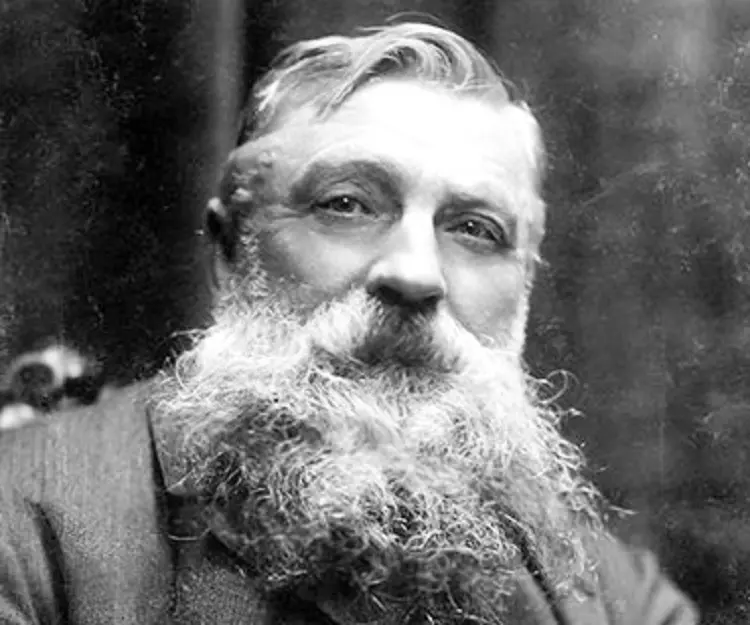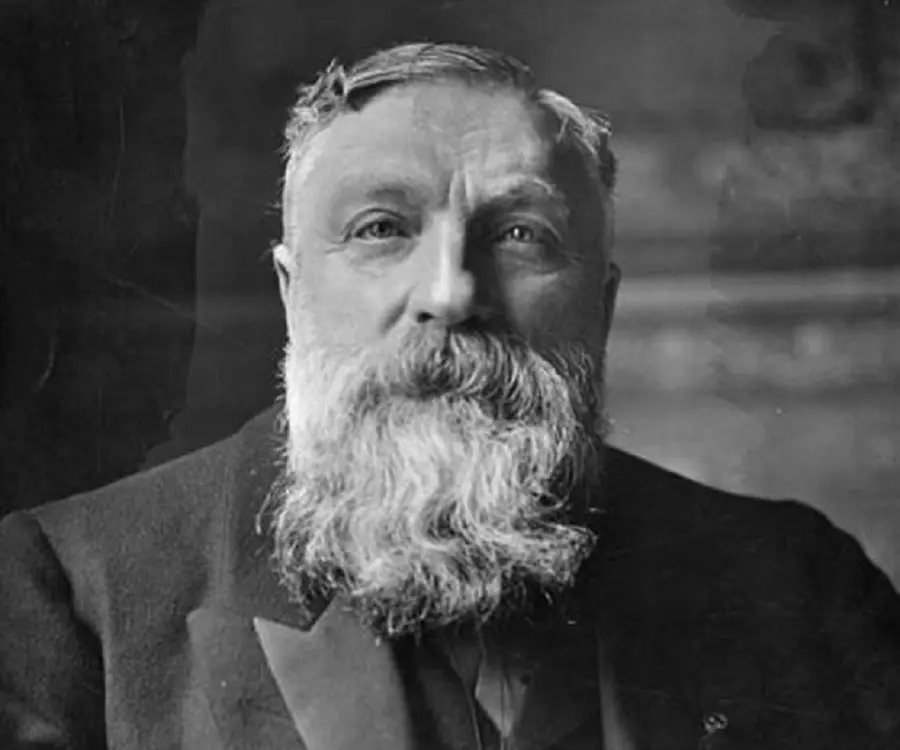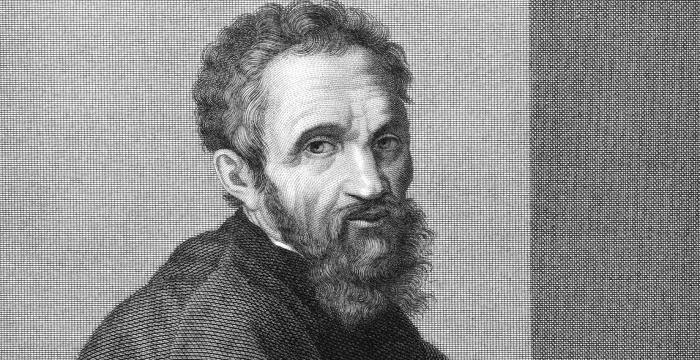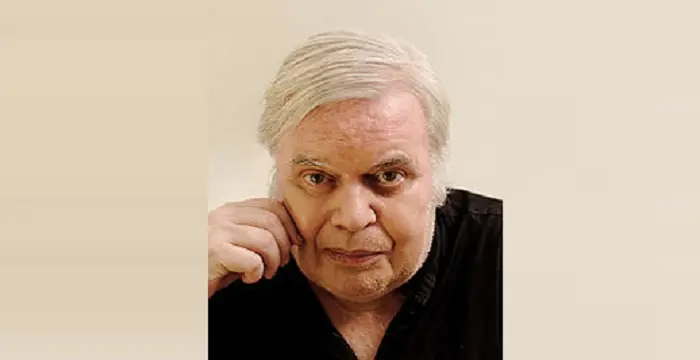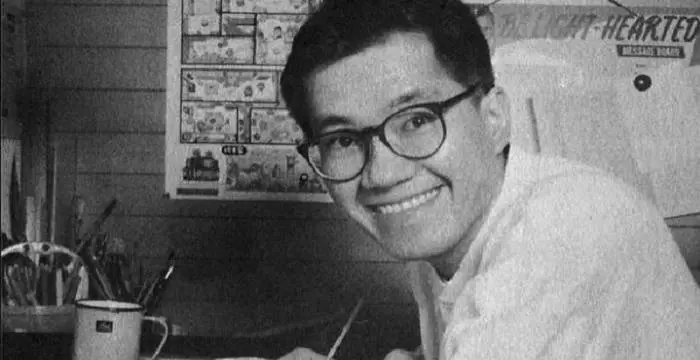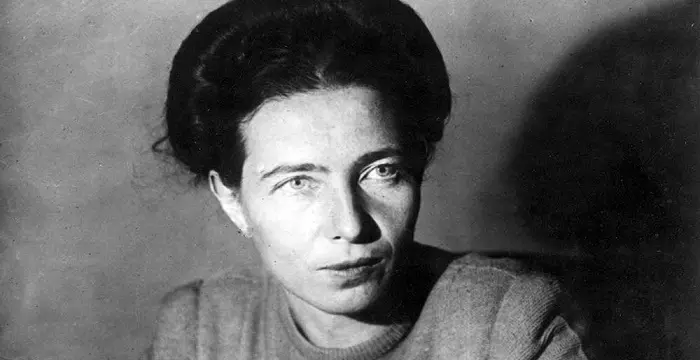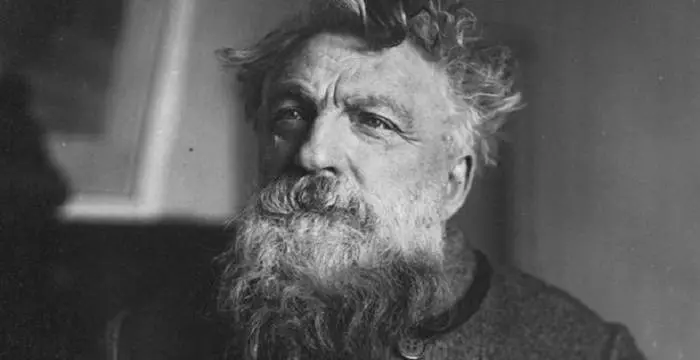
Auguste Rodin - Sculptors, Timeline and Childhood
Auguste Rodin's Personal Details
Auguste Rodin was a French sculptor who is known for his distinguished works of art and sculpture
| Information | Detail |
|---|---|
| Birthday | November 12, 1840 |
| Died on | November 17, 1917 |
| Nationality | French |
| Famous | Artists, Sculptors, Miscellaneous |
| City/State | Paris |
| Spouses | Rose Beuret |
| Siblings | Maria Rodin |
| Known as | Rodin, François-Auguste-René Rodin |
| Childrens | Auguste-Eugène Beuret |
| Universities |
|
| Birth Place | Paris |
| Gender | Male |
| Father | Jean-Baptiste Rodin |
| Mother | Marie Cheffer |
| Sun Sign | Scorpio |
| Born in | Paris |
| Famous as | Sculptor |
| Died at Age | 77 |
// Famous Miscellaneous
Jason Simpson
Jason Simpson is the son of former NFL running back, broadcaster and actor O. J. Simpson. Check out this biography to know about his childhood, family, life, and little known facts about him.
Melissa Brim
Melissa Brim is the ex-girlfriend of former professional boxer Floyd Mayweather Jr. Check out this biography to know about her birthday, childhood, family life, achievements and fun facts about her.
Joyce Meyer
Joyce Meyer is a Christian author and speaker. This biography provides detailed information about her childhood, life, achievements, works & timeline
Auguste Rodin's photo
Who is Auguste Rodin?
Auguste Rodin was a French sculptor who is known for his distinguished works of art and sculpture. Read this biography to get details about his life, profile and timeline
// Famous Sculptors
Yvonne McGuinness
Yvonne McGuinness is an Irish multimedia artist. This biography profiles her childhood, family, personal life, career, etc.
Michelangelo
Michelangelo was an Italian sculptor, painter, architect and poet. He is considered to be one of the greatest artists of the High Renaissance period. Know more about his childhood, life, achievements, works & timeline, in this brief biography
H. R. Giger
The famous designer of science fiction movie ‘Alien’, H. R. Giger is known for his surrealist and pioneering set-designs, sculptures and paintings. To know more about his childhood, career, profile and timeline read on.
Childhood & Early Life
Auguste Rodin was born as François-Auguste-René Rodin to Jean-Baptiste Rodin and Marie Cheffer on November 12, 1840 in Paris, France. He had an elder sister, Maria.
Born in a family of meagre means, young Rodin couldn’t afford going to school. As such, he was mostly self-educated. As soon as Rodin entered teenage, he enrolled himself at Petite École, studying drawing and painting.
In 1857, Rodin tried to enter the prestigious École des Beaux-Arts but failed. He attempted twice again but was rejected on each occasion. Dejected, he took to working as a craftsman and ornamenter. During this phase, Rodin indulged in producing decorative stonework and architectural embellishments.
The tragic death of his sister in 1862 deeply impacted Rodin. Briefly, he left his artistic career and instead joined the Catholic order, the Congregation of the Blessed Sacrament.
Encouraged by Saint Peter Julian Eymard, Rodin resumed his art life, working as a decorator. He trained under Antoine-Louis Barye, who immensely influenced Rodin on the detailing aspect of art.
Career
In 1864, Rodin entered the art studio of Albert-Ernest Carrier-Belleuse and made his first submission in the official Salon exhibition. However, his work was rejected.
Until 1870, Rodin worked as the chief assistant for Carrier-Belleuse, designing roof decorations and doorway embellishments. Briefly, he served in the army during the Franco-Prussian War before re-joining Carrier-Belleuse in Belgium, working on ornamentation of the Brussels’ public buildings.
In 1875, Rodin visited Italy. The trip left the artist startled by the artistic geniuses that prevailed at that time. The works of Michelangelo and Donatello left a deep impact on Rodin, rescuing him from the academicism of his work experience. He travelled to Genoa, Florence, Rome, Naples and Venice before returning to Brussels.
The visit to Italy stirred the inner artist in Rodin, who until then was too engaged with his decorative stonework to actually realize the fact that art was more than just academicism. The experience helped him develop a personally expressive style, thus breaking the monotony.
Returning to Brussels, Rodin started working on his first original work, named ‘The Vanquished’. Today popularly known as ‘The Age of Bronze’, it was his first life-size male sculpture whose realism earned Rodin lots of attention and accusation. However, it did release him from obscurity and put him into limelight.
In 1877, Rodin returned to Paris. Three years later, he was offered the position of part time designer by his former master, Carrier-Belleuse. Meanwhile, Rodin took part in various competitions but was rejected each time.
Rodin’s artistic acumen earned him a commission from Edmund Turquet, Undersecretary of the Ministry of Fine Arts, to create a bronze door for the then soon-to-open Museum of Decorative Arts in 1880.
Though the Museum of Decorative Arts was never completed and his work remained essentially unfinished until his death, the project became one of the most important works of his lifetime. Eventually known as ‘The Gates of Hell’, the monumental sculpture by Rodin comprised of scenes from Dante’s Inferno. It gave Rodin the financial security to pursue artistic freedom.
‘The Gates of Hell’ comprised of 186 figures and became the monumental base or framework for much of Rodin’s later works. It was out of it that Rodin created independent sculptures, figurines and groups. Some of his most celebrated independent works out of it include, ‘The Thinker’, ‘The Kiss’, ‘The Three Shades’, ‘Ugolino’, ‘Fugit Amor’, ‘The Falling Man’ and ‘The Prodigal Son’.
While working on ‘The Gates of Hell’, Rodin took up a commission to supervise a course for sculptor, Alfred Boucher. It was while administering the course that Rodin befriended a talented sculptor Camille Claudel, a friendship that was to last for long. The two influenced each other greatly and the friendship transformed into a passionate relationship.
Amongst the other commissions that Rodin worked on while pursuing ‘The Gates of Hell’ commission was ‘The Burghers of Calais’. During the Hundred Years’ War, King Edward III besieged the town of Calais. In order to safeguard the town, six men barefooted and bareheaded, sacrificed themselves as detainees to the King. Taking cue from this event, Rodin created ‘The Burghers of Calais’ sculpture.
Made in bronze and weighing more than two tonnes, ‘The Burgher of Calais’ was one of the most celebrated and acclaimed works by Rodin. Despite being completed in 1889, it was only in 1895 that the monument was displayed to public. Later in 1913, a bronze statue of the Calais group was added to the sculpture depicting insistence by the Queen to show mercy on the men.
In 1889, Rodin was commissioned to create a monument for Victor Hugo. Just like his previous work, the monument was far away from conventional standards and instead dealt with the subject of artist and muse.
In 1891, he was commissioned to create a monument for French author Honoré de Balzac by Société des Gens des Lettres. The work was however quite different from Rodin’s former works, in terms of taste and perception. It broke the conventional ties and depicted Balzac partly draped with deep eyes and expressions that conveyed courage, labour and struggle. Due to the same, the Société rejected his work.
Rodin’s large collection of sculptures and drawings were displayed in Exposition Universelle of 1900 in Paris. The exhibit further glorified his artistic reputation as he started receiving orders for making busts of prominent people from around the globe including United States, England, Germany and France.
In 1903, he served as the elected president of the International Society of Painters, Sculptors, and Engravers, replacing James Abbott McNeill Whistler, after the latter’s death.
During much of his later life, Rodin turned his creative attention to themes of masculinity and femininity. He concentrated on dance studies and came up with a collection of erotic drawings.
Major Works
progenitor of modern sculpture, Rodin greatest work came in late in his life as he gradually developed his unconventional style that challenged the traditional approach. Some of his most celebrated and best-known works include, ‘The Age of Bronze’, ‘The Gate of Hell’, ‘The Thinker’, ‘The Kiss’ and ‘The Burghers of Calais’. Additionally, his portraits of monumental figures such as Victor Hugo and Honore de Balzac also feature as some of his most distinguished works.
Personal Life & Legacy
Rodin first met his future partner, Rose Beuret, a young seamstress, in 1864. The two shared an intimate bond almost instantly and Beuret eventually became his companion for life. It was only after fifty-three years into their relationship that the two married on January 29, 1917. In 1866, however, they were blessed with a Rodin’s only child, a son Auguste Eugene Beuret.
In 1883, Rodin befriended Camille Claudel. The friendship soon progressed as the two shared a passionate yet stormy relationship. She served as his inspiration for many of his figures.
In 1889, Rodin’s personal life underwent a major turmoil as both Beuret and Clauddel became increasingly impatient with his double standards. Despite living with Claudel, Rodin refused to bow out of his relationship with Beuret, who mothered his son. It was only in 1898 that Claudel and Rodin separated. Subsequently, Claudel underwent nervous breakdown that led to her death.
Though Beuret was essentially Rodin’s love companion, her experience of marital bliss was short-lived. Just two weeks after marrying Rodin, she breathed her last on February 16, 1917.
Rodin suffered from influenza that eventually weakened his health. He died on November 17, 1917, at his villa in Meudon, Île-de-France, on the outskirts of Paris, due to congestion of the lungs.
Posthumously, he was made commander by the French Légiond'honneur and received an honorary doctorate from the University of Oxford.
Due to the changing aesthetic value, the popularity of Rodin profoundly declined in the decades following his death. It was only in 1950 that his reputation yet again zoomed as he became recognized as the most important sculptor of the modern era. He has played an influential role for numerous artists and sculptors of the modern era.
// Famous Artists
Susan Mikula
Susan Mikula is an American artist and photographer. Check out this biography to know about her childhood, family life, achievements and fun factsabout her life.
Akira Toriyama
Akira Toriyama is a Japanese manga artist. This biography profiles his childhood, family, personal life, achievements, etc.
Bob Ross
Bob Ross was a celebrated, creative American painter and an art instructor. Check out this biography to know about his birthday, childhood, family life, achievements and fun facts about him.
Auguste Rodin's awards
| Year | Name | Award |
|---|---|---|
Other | ||
| 0 | Legion of Honour | |
Auguste Rodin biography timelines
- // 12th Nov 1840Auguste Rodin was born as François-Auguste-René Rodin to Jean-Baptiste Rodin and Marie Cheffer on November 12, 1840 in Paris, France. He had an elder sister, Maria.
- // 1857In 1857, Rodin tried to enter the prestigious École des Beaux-Arts but failed. He attempted twice again but was rejected on each occasion. Dejected, he took to working as a craftsman and ornamenter. During this phase, Rodin indulged in producing decorative stonework and architectural embellishments.
- // 1862The tragic death of his sister in 1862 deeply impacted Rodin. Briefly, he left his artistic career and instead joined the Catholic order, the Congregation of the Blessed Sacrament.
- // 1864In 1864, Rodin entered the art studio of Albert-Ernest Carrier-Belleuse and made his first submission in the official Salon exhibition. However, his work was rejected.
- // 1864 To 1866Rodin first met his future partner, Rose Beuret, a young seamstress, in 1864. The two shared an intimate bond almost instantly and Beuret eventually became his companion for life. It was only after fifty-three years into their relationship that the two married on January 29, 1917. In 1866, however, they were blessed with a Rodin’s only child, a son Auguste Eugene Beuret.
- // 1870Until 1870, Rodin worked as the chief assistant for Carrier-Belleuse, designing roof decorations and doorway embellishments. Briefly, he served in the army during the Franco-Prussian War before re-joining Carrier-Belleuse in Belgium, working on ornamentation of the Brussels’ public buildings.
- // 1875In 1875, Rodin visited Italy. The trip left the artist startled by the artistic geniuses that prevailed at that time. The works of Michelangelo and Donatello left a deep impact on Rodin, rescuing him from the academicism of his work experience. He travelled to Genoa, Florence, Rome, Naples and Venice before returning to Brussels.
- // 1877In 1877, Rodin returned to Paris. Three years later, he was offered the position of part time designer by his former master, Carrier-Belleuse. Meanwhile, Rodin took part in various competitions but was rejected each time.
- // 1880Rodin’s artistic acumen earned him a commission from Edmund Turquet, Undersecretary of the Ministry of Fine Arts, to create a bronze door for the then soon-to-open Museum of Decorative Arts in 1880.
- // 1883In 1883, Rodin befriended Camille Claudel. The friendship soon progressed as the two shared a passionate yet stormy relationship. She served as his inspiration for many of his figures.
- // 1889In 1889, Rodin was commissioned to create a monument for Victor Hugo. Just like his previous work, the monument was far away from conventional standards and instead dealt with the subject of artist and muse.
- // 1889 To 1898In 1889, Rodin’s personal life underwent a major turmoil as both Beuret and Clauddel became increasingly impatient with his double standards. Despite living with Claudel, Rodin refused to bow out of his relationship with Beuret, who mothered his son. It was only in 1898 that Claudel and Rodin separated. Subsequently, Claudel underwent nervous breakdown that led to her death.
- // 1891In 1891, he was commissioned to create a monument for French author Honoré de Balzac by Société des Gens des Lettres. The work was however quite different from Rodin’s former works, in terms of taste and perception. It broke the conventional ties and depicted Balzac partly draped with deep eyes and expressions that conveyed courage, labour and struggle. Due to the same, the Société rejected his work.
- // 1895Made in bronze and weighing more than two tonnes, ‘The Burgher of Calais’ was one of the most celebrated and acclaimed works by Rodin. Despite being completed in 1889, it was only in 1895 that the monument was displayed to public. Later in 1913, a bronze statue of the Calais group was added to the sculpture depicting insistence by the Queen to show mercy on the men.
- // 1900Rodin’s large collection of sculptures and drawings were displayed in Exposition Universelle of 1900 in Paris. The exhibit further glorified his artistic reputation as he started receiving orders for making busts of prominent people from around the globe including United States, England, Germany and France.
- // 1903In 1903, he served as the elected president of the International Society of Painters, Sculptors, and Engravers, replacing James Abbott McNeill Whistler, after the latter’s death.
- // 16th Feb 1917Though Beuret was essentially Rodin’s love companion, her experience of marital bliss was short-lived. Just two weeks after marrying Rodin, she breathed her last on February 16, 1917.
- // 17th Nov 1917Rodin suffered from influenza that eventually weakened his health. He died on November 17, 1917, at his villa in Meudon, Île-de-France, on the outskirts of Paris, due to congestion of the lungs.
// Famous Paris peoples
Alex Lange
Alex Lange is a French-South African model, who is quite popular on Instagram. Check out this biography to know about his childhood, family life, achievements and fun facts about him.
Simone de Beauvoir
Simone de Beauvoir was an eminent French writer, intellectual, activist, and philosopher. This biography profiles her childhood, life, thoughts, achievements and timeline.
Jean-Paul Sartre
Jean-Paul Sartre was a great existentialist philosopher of the 20th century. Check out this biography to know about his childhood, family life, achievements and other facts related to his life.
Sophie Marceau
Sophie Marceau is a French actress, screenwriter, director and author. Check out this biography to know about her birthday, childhood, family life, achievements, and fun facts about her.
Marquis de Sade
Marquis de Sade was a French nobleman and an erotic novel writer. Check out this biography to know about his childhood, family life, achievements and fun facts about his life.
Emma Watson
Emma Watson is a British actress and model, best-known for her role as ‘Hermione Granger’ in the Harry Potter series. Explore this biography to learn more about her profile, childhood, life and timeline.
Auguste Rodin's FAQ
What is Auguste Rodin birthday?
Auguste Rodin was born at 1840-11-12
When was Auguste Rodin died?
Auguste Rodin was died at 1917-11-17
Where was Auguste Rodin died?
Auguste Rodin was died in Meudon
Which age was Auguste Rodin died?
Auguste Rodin was died at age 77
Where is Auguste Rodin's birth place?
Auguste Rodin was born in Paris
What is Auguste Rodin nationalities?
Auguste Rodin's nationalities is French
Who is Auguste Rodin spouses?
Auguste Rodin's spouses is Rose Beuret
Who is Auguste Rodin siblings?
Auguste Rodin's siblings is Maria Rodin
Who is Auguste Rodin childrens?
Auguste Rodin's childrens is Auguste-Eugène Beuret
What was Auguste Rodin universities?
Auguste Rodin studied at École nationale supérieure des arts décoratifs
Who is Auguste Rodin's father?
Auguste Rodin's father is Jean-Baptiste Rodin
Who is Auguste Rodin's mother?
Auguste Rodin's mother is Marie Cheffer
What is Auguste Rodin's sun sign?
Auguste Rodin is Scorpio
How famous is Auguste Rodin?
Auguste Rodin is famouse as Sculptor



